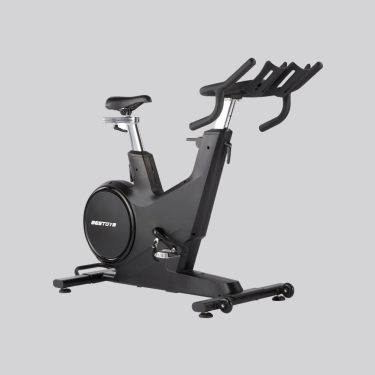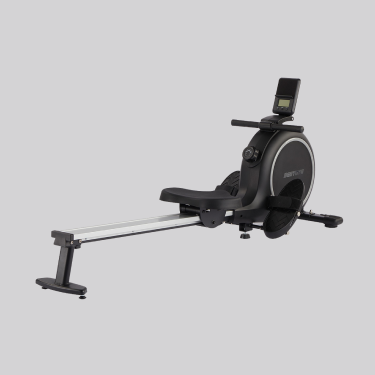Can you make money as a gym owner?
Owning a gym is often seen as a dream venture for fitness enthusiasts and entrepreneurs alike. The idea of combining your passion for fitness with the opportunity to run a profitable business is appealing. However, it’s essential to recognize that gym ownership is not a guaranteed path to wealth. Like any business, it requires careful planning, strategic execution, and a willingness to adapt to industry trends.
This comprehensive guide explores whether you can make money as a gym owner by delving into the initial investments, revenue streams, operational strategies, challenges, and success stories. Whether you’re considering starting your own gym or improving an existing one, this blog will help you understand the factors that influence profitability.
The Initial Investment: What Does It Take to Start a Gym?
Starting a gym requires substantial upfront investment, which varies depending on the type of gym you want to open, its location, and the services you plan to offer. Let’s explore the major costs involved:
1. Facility Costs
Lease or Purchase: Securing a facility is one of the most significant expenses. The cost depends on factors such as size, location, and local real estate rates. A gym in a high-traffic urban area will cost more to rent or purchase but may attract more members due to its accessibility.
Renovation and Build-Out: Most spaces require customization to transform them into a functional gym. Costs may include installing durable flooring, mirrors, sound systems, locker rooms, showers, and ventilation systems.
2. Equipment
High-quality gym equipment is essential for member satisfaction. Start with a mix of cardio machines (treadmills, ellipticals), strength training equipment (weight machines, dumbbells), and functional fitness tools (resistance bands, kettlebells). Expect to spend anywhere from $50,000 to $200,000 depending on the size of your gym and the variety of equipment.
3. Licensing and Insurance
You’ll need business licenses and permits to operate legally. Additionally, liability insurance is critical to protect against potential lawsuits from injuries or accidents on your premises.
4. Marketing and Branding
Launching a new gym requires a robust marketing plan to attract members. This includes website development, social media campaigns, local advertising, and promotional events. A well-designed logo and consistent branding can also help establish your gym in the market.
5. Staffing
Staff costs include salaries for personal trainers, group fitness instructors, front desk personnel, cleaning staff, and management. Hiring experienced and certified professionals is crucial for building a reputation for quality.
6. Miscellaneous Costs
Other costs include software for membership management, security systems, and utilities such as electricity and water.

Revenue Streams for Gym Owners
A gym’s profitability largely depends on its ability to generate diverse revenue streams. Relying solely on membership fees may not be sufficient to sustain and grow the business. Below are common revenue sources:
1. Membership Fees
Monthly Subscriptions: Membership fees are the backbone of most gyms. A well-structured pricing model with options for monthly, quarterly, or annual subscriptions ensures steady cash flow. For example, a budget gym might charge $20–$30 per month, while boutique gyms can command $100–$200 per month.
Tiered Pricing Models: Offering multiple membership levels (e.g., basic, premium, VIP) caters to different budgets and preferences. Premium members might enjoy perks like unlimited classes, free guest passes, or exclusive amenities.
2. Personal Training Services
Personal training is a high-margin service. Trainers charge $50–$100 per hour, and gyms typically take a percentage of the fee. Offering customized fitness plans and one-on-one coaching can significantly enhance your revenue.
3. Group Fitness Classes
Group classes such as yoga, Pilates, Zumba, and spin are popular among members. These classes not only generate additional income but also foster a sense of community, encouraging member retention.
4. Retail Sales
Selling fitness-related products such as supplements, branded apparel, water bottles, and gym bags adds an additional revenue layer. Retail items also promote your brand outside the gym.
5. Online Programs and Virtual Training
Virtual fitness classes and online coaching have become increasingly popular, especially post-pandemic. These services allow you to reach a wider audience and generate passive income.
6. Facility Rentals
Renting your space for events, workshops, or specialty training sessions can be a lucrative side income. For instance, you could host a weekend boot camp or lease the space to local sports teams for practice.
Key Factors Influencing Gym Profitability
The financial success of a gym hinges on a combination of strategic planning and operational excellence. Below are five critical factors that directly impact profitability:
1. Location
The location of your gym plays a pivotal role in its success. A facility in a high-traffic area with minimal direct competition is more likely to attract consistent footfall. Urban and suburban neighborhoods with health-conscious populations offer the most potential, especially if located near workplaces, residential complexes, or shopping centers. Accessibility is equally important; a gym with ample parking or proximity to public transport is more convenient for members, increasing retention rates.
2. Target Audience
Knowing your target audience is essential for designing offerings that meet their needs. For example, young professionals might value high-intensity group classes and advanced equipment, while families may seek gyms with childcare services. Seniors might prioritize low-impact exercise options and wellness programs. Tailoring your services, equipment, and marketing to appeal to your primary demographic ensures better engagement and membership growth.
3. Membership Retention
Retaining members is significantly more cost-effective than acquiring new ones. To achieve this, focus on delivering a superior member experience. This includes offering engaging group classes, maintaining clean and functional facilities, and providing personalized customer service. Building a sense of community through events, challenges, and social interactions also helps foster loyalty and reduce churn.
4. Marketing Strategies
A robust marketing strategy is vital for attracting and retaining members. Utilize digital tools like Google Ads, social media campaigns, and SEO to boost visibility. Referral programs incentivize existing members to bring in friends, while partnerships with local businesses can expand your reach. Regular promotions and testimonials from satisfied members can also enhance credibility and draw attention.
5. Operational Efficiency
Streamlined operations can significantly reduce overhead costs and maximize profitability. Gym management software helps automate billing, track memberships, and manage class schedules efficiently. Regular maintenance of equipment and facilities minimizes downtime and enhances the overall member experience. Additionally, optimizing staff scheduling and training ensures smooth day-to-day operations.
Challenges of Running a Gym
Owning and managing a gym can be rewarding, but it comes with several challenges that require strategic planning and consistent effort to overcome. Below are the key challenges gym owners face:
1. High Competition
The fitness industry is highly competitive, with a wide array of options available to consumers. From boutique studios specializing in yoga or spin classes to large franchise gyms and online fitness platforms, the market is crowded. To stand out, gym owners must offer innovative services, create a unique brand identity, and deliver exceptional customer experiences. Failure to differentiate your gym can make it difficult to attract and retain members.
2. Seasonal Fluctuations
Gym memberships often experience seasonal highs and lows. For instance, January typically sees a surge in memberships due to New Year’s resolutions, but attendance may drop during the summer months when people prioritize vacations and outdoor activities. This inconsistency can impact cash flow, making it crucial for gym owners to plan promotions, loyalty programs, or special events to sustain member engagement year-round.
3. Operational Costs
Running a gym comes with significant fixed expenses, including rent, utilities, equipment maintenance, and staff salaries. Without efficient management, these costs can quickly erode profits. Budgeting and finding ways to optimize expenses, such as energy-efficient equipment or automated systems, are essential to maintain financial stability.
4. Customer Expectations
Today’s gym-goers expect more than basic equipment and facilities. They demand clean, modern environments, engaging group classes, and personalized services such as personal training or wellness programs. Meeting these expectations requires continuous investment in staff training, equipment upgrades, and facility improvements. Failing to deliver on these fronts can lead to member dissatisfaction and high turnover rates.

Strategies to Maximize Profitability
1. Diversify Offerings
Add services such as nutrition coaching, wellness workshops, or childcare to attract a broader clientele and increase revenue.
2. Focus on Member Experience
Create a welcoming and supportive environment. Personalize interactions, celebrate member milestones, and maintain open communication to build loyalty.
3. Invest in Technology
Use technology to enhance the member experience. Fitness tracking apps, virtual classes, and smart gym equipment can differentiate your gym from competitors.
4. Leverage Social Media
Social media is a powerful tool for engagement and brand promotion. Share success stories, host challenges, and run targeted ads to reach potential members.
5. Monitor KPIs
Track metrics like membership growth, retention rates, and average revenue per member to identify areas for improvement.
Conclusion: Is Gym Ownership Right for You?
Owning a gym can be a rewarding and profitable endeavor, but success depends on careful planning and execution. By understanding the costs, diversifying revenue streams, and addressing challenges, you can build a thriving fitness business. Whether you’re a fitness enthusiast or an entrepreneur, owning a gym offers the potential for financial and personal fulfillment.
If you’re ready to embark on this journey, start by researching your market, creating a detailed business plan, and staying adaptable to industry trends. With dedication and strategic thinking, you can turn your passion for fitness into a profitable enterprise.
Read More: Your Top Air Bike Manufacturer in China











